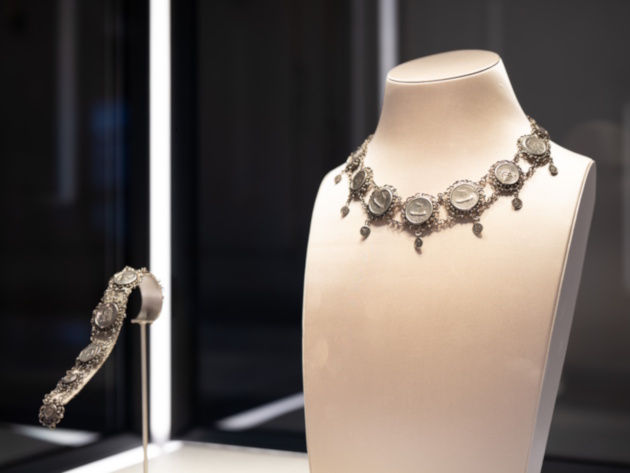
The eternal charm of Etruscan civilization, known for the refinement of its jewelry and mastery of complex goldsmithing techniques such as granulation and filigree, and a heritage that continues to this day are at the center of the exhibition hosted by the Etruscan Museum of Villa Giulia, one of the first fruits of the museum’s collaboration with the Bvlgari Foundation.
A visually striking display welcomes visitors to the Sala dei Setti Colli, overlooking the villa’s central loggia. Here, the precious creations of the Bvlgari Heritage Collection interact with the Ori Castellani, the permanent collection donated to the museum in 1919 by Alfredo Castellani, the last representative of a family of goldsmiths, collectors, and antique dealers. The family tradition began about a hundred years earlier with Fortunato Pio Castellani, the pioneer of the “archaeological style”, and his workshop, a center of excellence in the reproduction and reinvention of jewelry inspired by the gold unearthed during the archaeological excavations of the time, particularly the goldsmith’s work from the necropolises of Cerveteri, Veio, Vulci, and Tarquinia.
In this age-old dialogue between art and jewelry, the same commitment to technical excellence and ability to reinterpret ancient forms and iconography with a modern spirit can still be found today in the creations of the maison founded in 1884 by silversmith Sotirio Bulgari, a symbol of Italian genius and luxury. The selection of jewelry on display opens with a pair of gold earrings with coins from the imperial era, made by Castellani around 1880 and added to the Bvlgari Heritage Collection in 2003, thanks to Nicola Bulgari’s passion for collecting. Other display cases house historic creations by Bvlgari, such as the Monete Doppio Cuore necklace in gold with hematite and a Greek silver coin, a gold necklace with Roman carvings and diamonds, and a silver bracelet from the late 19th century, created by Sotirio Bulgari.
Informationen
La mostra non è visitabile le prime domeniche del mese.
 Condividi
Condividi











































